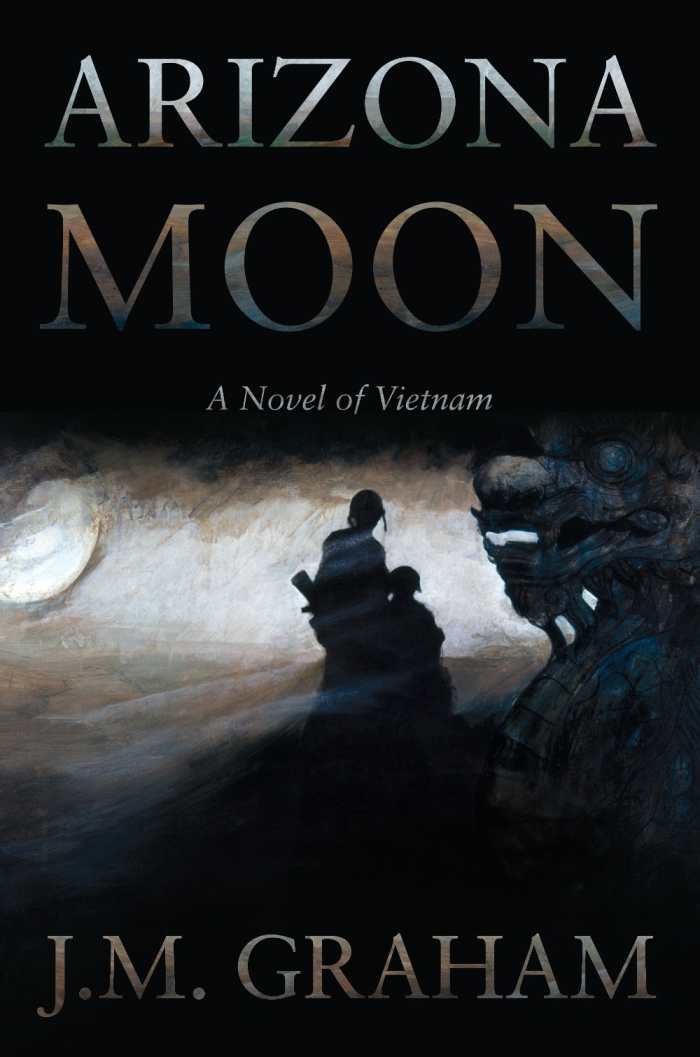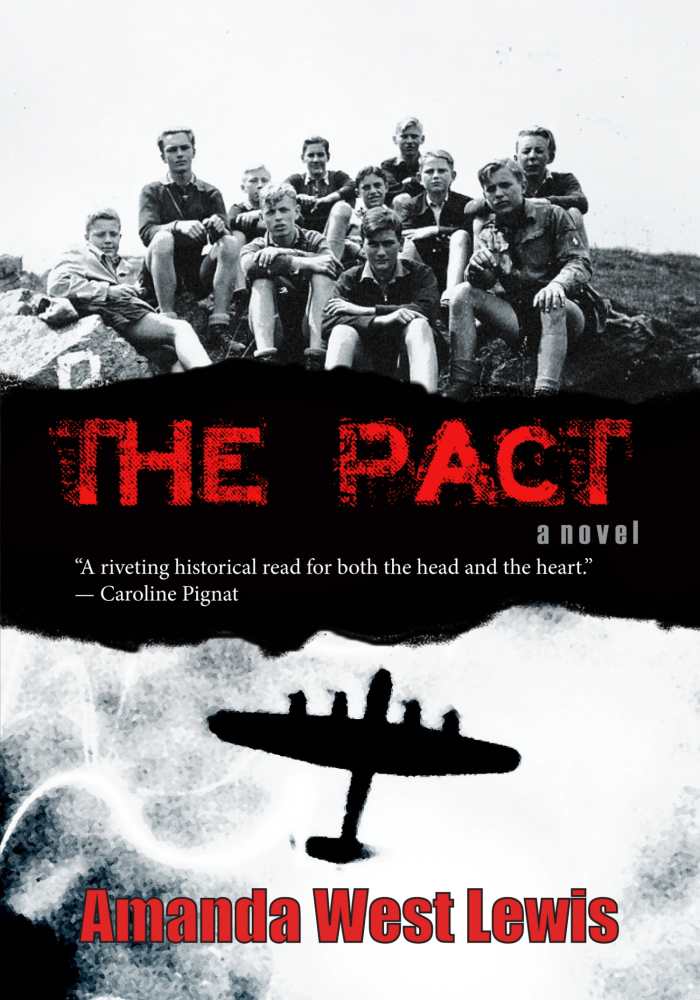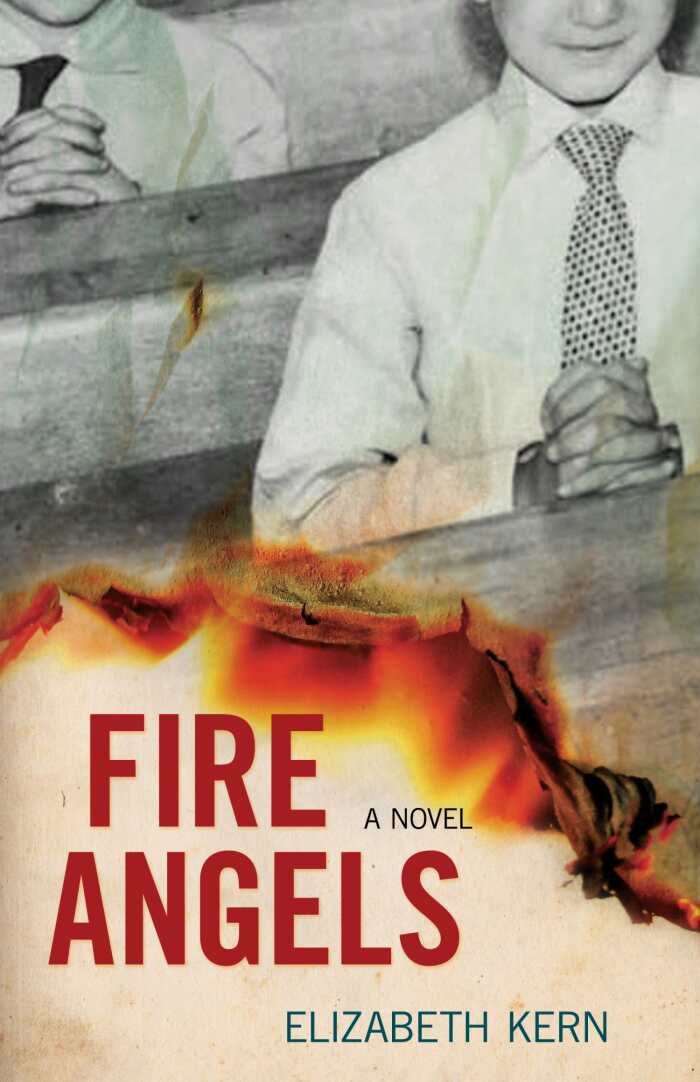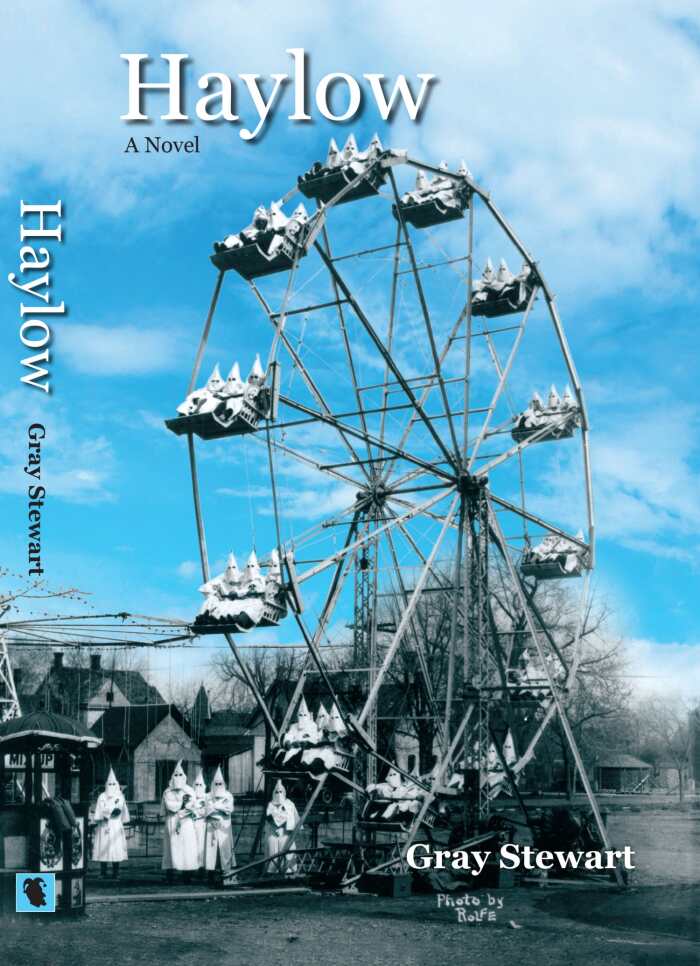6 Best Historical Fiction Novels of Winter
History is a curious thing—much of it is shrouded in mystery, uniquely indecipherable, lost to history. Of course, that doesn’t stop fiction writers from trying. To tell the story of the past, authors have delved into history and brought it to life. Perhaps we cannot tell our whole history, but we can live it in these novels featured in Winter 2017 issue.
Arizona Moon
A Novel of Vietnam

J. M. Graham
Naval Institute Press
Hardcover $26.95 (320pp)
978-1-68247-071-8
Buy: Local Bookstore (Bookshop)
The novel’s beating heart is the power, scope, and ramifications of duty, loyalty, and brotherhood.
In his intense and empathetic Arizona Moon, J. M. Graham draws upon his own Vietnam War experiences.
Corporal “Reach” Strader serves in a marine rifle platoon. Reach has “two days and a wake-up” until he rotates home, when a fellow soldier, called Chief, is wounded—and blamed for the deaths of two other marines. That this is in error is only evident after a helicopter carrying both soldiers is shot down.
The pair must cooperate to survive, and Chief must find his spirit pouch, a sacred talisman that was stolen by an NVA soldier. Reach, trapped by the loyalty forged by marines who fight and die together, follows Chief deeper and deeper into enemy territory. The novel’s beating heart is the power, scope, and ramifications of duty, loyalty, and brotherhood.
A second narrative thread is concise, focused, and nuanced. Former student Truong Nghi has an ethos as unbreakable as any marine’s. He’s part of an NVA battalion carrying supplies down the Ho Chi Minh trail. And a secondary character, Lieutenant Diehl, also turns tropes upside down, proving to be calm and steady, relying on the knowledge of sergeants, though he has a temper that comes “to the surface like hot magma.”
Exploring its themes at a pace that never slackens, the story’s tension, especially during combat scenes, ratchets up so tightly at times that gunshots seem to echo. The racial tensions that plagued the Vietnam War are touched upon symbolically through the platoon’s wariness of Chief, who is taciturn and who resists interaction with others. He is perceived to move with an aura of suppressed violence.
Increasingly oppressive and malevolent as the conflict intensifies, the Vietnamese jungle becomes a cinematic setting, echoing noises fraught with danger as illusions shift in the rain and mist between enemies and friends. While the NVA troops survive on rice and political fervor, the marines move about sick with fatigue, choking down foul, chemically laced water, and cramming down C-rations.
Arizona Moon is an intense study of men at war, with a restrained and realistic conclusion.
GARY PRESLEY (November 28, 2016)
The Ornatrix

Kate Howard
The Overlook Press
Hardcover $27.95 (304pp)
978-1-4683-1382-6
Morbidly engrossing, the novel probes the lengths women go to in order to be seen as beautiful.
Kate Howard’s The Ornatrix is a dazzling exploration of the meaning and conveyance of feminine beauty.
Flavia lives with the blemish of a bird-shaped birthmark across her face. Under the weight of her mother’s judgment, she is forced to hide away from most of the world, only allowed outside if she dons a hat with a veil to cover her blatant imperfection. When she ruins her sister’s wedding dress out of spite, Flavia is banished by her family to the convent of Saint Guiliana.
There, she meets Ghostanza, a striking Venetian and a widowed courtesan who takes Flavia as her ornatrix, her personal handmaid. She also introduces Flavia to cerussa, a white lead makeup that can erase her birthmark. Thus Flavia is drawn into the dark world of obsessive vanity, where she must come to terms with herself or risk drowning in vice.
Beauty and ugliness are contrasted throughout the novel, interspersed with historical recipes for drawing out female loveliness that, though they may be strange and laughable in modernity, illustrate the lengths that women have gone to to attain physical appeal. Caught up in such ritualistic masks, Flavia must confront the physical and emotional dangers of sharp concern with outward appearances.
In pursuit of the ultimate standard of beauty, characters often become twisted. Once-innocent Flavia uncovers a wiliness in herself through the influence of Il Sicofante, the apothecary. Sweet Gilia, Ghostanza’s step-daughter, is also not all she is on the surface, and though Flavia’s mother is far too poor to indulge in the coveted cerussa, she imposes her own harsh ceremonies to remove Flavia’s embarrassing mark. Only Vitale, a kindly doctor, seems to escape being bent, serving as a possible avenue of salvation.
At times morbidly engrossing, The Ornatrix is a powerful testament to both the wonders and pitfalls of feminine identity when entwined with ever-shifting perceptions of beauty.
MEAGAN LOGSDON (November 2, 2016)
The Pact

Amanda West Lewis
Red Deer Press
Softcover $14.95 (352pp)
978-0-88995-544-8
Buy: Local Bookstore (Bookshop)
This historical novel is perfectly relevant in this period of international instability.
Amanda West Lewis’s The Pact is intriguing historical fiction from the memorable point of view of a German boy who comes of age during World War II.
Peter’s mother works as a housekeeper, and they often have little to eat and face social prejudice. But Peter is intelligent, sometimes seeming to relate to his mother as a fellow adult, and earns a scholarship to a gymnasium, a prestigious education track.
Chapters open with Peter in the hospital with diphtheria and remembering snatches of dreams, most often about his best friend’s drowning death. He and his contemporaries are in the Hitler Youth, through which they take field trips, experience Allied bombing, and head off for preliminary officer training in Denmark, late in the war.
They are a varied cast, including a bully, an empathetic youngster, and Otto, a half-Jewish boy who disappears midwar. Peter’s growing sophistication—and doubts about Germany’s course—are revealed first when his mother gives him classic Russian novels. Later, Peter and his friends see images of Josephine Baker and hear a recording of the opera Porgy and Bess.
The Pact confronts questions of evil, including slave labor in German industry and the death camps. As Peter sees these horrors—and learns of Otto’s disappearance—the novel examines moral issues in an appreciable way. The moral conundrum of the wholesale bombing of German cities is also present.
Affecting descriptions of bombing and firestorms draw Hamburg out. Tension increases during a raid on an aircraft engine factory where Peter briefly works. Locations in rural Germany and Hungary are well drawn. In Hungary, Peter shares a youthful infatuation, and the anecdote is described to perfection. Later, as Peter and his contemporaries are sent to Denmark, every setting increases the somber mood.
With its basis in history, The Pact is particularly relevant in this period of international instability, especially as it depicts a bloodthirsty dictator seizing power while a nation struggles.
GARY PRESLEY (November 28, 2016)
The Train to Orvieto

Rebecca Novelli
Black Heron Press
Softcover $17.95 (400pp)
978-1-936364-23-7
With careful settings and raw seams, The Train to Orvieto is a fascinating journey of sins come home to roost.
The Train to Orvieto details a Midwestern ingenue’s love for art—as narrated by her daughter—and the folly that sparks a lifetime of regret. Rebecca Novelli’s striking novel is an intimate, elegant portrait of an individualist who embraces an expatriate life, and of women’s roles in the twentieth century and the passions that guided them.
Distinct sections focus on Willa and her main loves. An impulsive dreamer from 1930s Ohio who moves to Italy to become an artist, Willa commits social errors that brand her as an outsider in the circumspect town of Orvieto. Novelli refreshes the classic subject of a woman who seeks self-discovery abroad, through a dramatic plot that pulls her flawed protagonist from an emotionally withering marriage to an affair that spans across years. Tension builds toward 1968, when Willa’s daughter, Fina, discovers the secret that soured her parents’ relationship.
Novelli—also a painter—deftly creates scenes in the Marcheschi villa that draw a stark contrast between Willa’s failed ambitions and the rustic truth of living in her husband’s family home. Willa gradually transforms from a naive, reckless young American to a capable landowner who continually defies expectations. The journey between takes detours and predictable turns yet portrays Willa’s disillusionment without judgment for her decisions. For all the book’s emphasis on whether women can shape their own fate in a time that favors tradition, its the subtler themes, like that of keeping faith amid darkness, that most stand out.
Few characters exemplify this quality more than Michel Losine, a Jewish gem dealer and widower whose family suffered the brutality of war. Ever the gentleman who has a cool demeanor and is a capable orchestrator of events, his success belies restrained vulnerability. The struggle between his loyalties to the living and the dead add depth to his actions. Fina displays a similar ambiguity, to a lesser degree. Her arc, if sparer and less assured than her mother’s, offers an alternative to resignation. Her efforts to pave-over past conflicts reveal a different strength.
With careful settings and raw seams, The Train to Orvieto is a fascinating journey of sins come home to roost.
KAREN RIGBY (November 28, 2016)
Fire Angels

Elizabeth Kern
Chicago Review Press
Softcover $14.99 (320pp)
978-1-61373-629-6
Buy: Local Bookstore (Bookshop)
This is a heartbreaking and engrossing novelization of part of Chicago’s history.
Elizabeth Kern’s Fire Angels is a novelization of the tragic 1958 fire that destroyed Chicago’s Our Lady of the Angels School and killed ninety-two children and three nuns. The book recalls the horror of that day, and the impact it had upon the city and the nation.
Loving knowledge of Chicago adds a special dimension to Fire Angels. The close-knit, northwest-side neighborhood where Our Lady of the Angels once stood is well detailed and represented. Italian, Irish, and Polish families sent their children to the Catholic school, which had over 1,500 students.
In an interesting turn, the entity of fire itself becomes a character in the book. Fire takes many forms, so its narrative presence comes and goes, but the voice is as brash and street-smart as one of Chicago author Nelson Algren’s hustlers, while also sounding compulsively contrite. “When I’m contained, I’m quite harmless,” the fire notes. He’s the warmth within fireplaces, the fuel that cooks delicious meals, or the flickering beauty of candlelight. But once let loose, he can turn evil and voracious, without self-control.
Because Fire Angels is based on truth, its impact is intense. Real people lost their lives, and parents watched in horror as the bodies of their sons and daughters were brought out by firefighters. For the survivors, years of psychological trauma and skin grafts became part of their future, and a once tightly connected neighborhood changed into a troubled pocket of loss and death.
Kern’s portrait of the nameless boy who most likely started the fire, and his unfortunate fascination with flames and matches, is compelling. She shows that while the boy did light the matches, the building itself had already exhibited many fire-hazard conditions. The Catholic Church did not want to be exposed to lawsuits or investigations. Instead, the archbishop of Chicago urged parents to accept God’s will, “for in fire, gold is tested.”
The story is heartbreakingly engrossing, and part of Chicago’s living history.
MEG NOLA (November 18, 2016)
Haylow

Gray Stewart
Livingston Press
Softcover $18.95 (293pp)
978-1-60489-174-4
With a surety of time and place, this biting novel depicts a South still marked by racism.
In Gray Stewart’s intriguing Haylow, Travis Hemperly is lured back to his hometown of Atlanta by a surprising job offer to teach history at one of the South’s oldest African-American colleges, as one of its few white faculty members.
Stewart’s knowledge of the South gives Haylow a surety of tone and place. The novel is set in 1996, after the Olympics close and the fanfare and chaos around them finally die down. Though Travis is a Georgia native, he’s lost his Southern accent after years up north; meanwhile, his father, Henry, is an old-guard Southerner and hosts a radio show on Confederate Talk Radio.
Stewart’s diverse characters form a cohesive story, related with insight and few judgments. Rhett, Travis’s shifty skinhead neighbor, hates the police, minorities, and even a few white people. Travis’s Uncle George, a “Budweiser and bourbon man,” lives in the Blue Ridge mountains with his fishing rod and rifle, trying to stave off old age and a changing world. Fellow professor A. B. Longman proves to be Travis’s true friend regardless of color lines, welcoming him to the realm of “Blackademia.” And Dr. Kwazi Kalamari—another faculty member—is particularly memorable, with radical beliefs now considered reactionary by the college administration.
Though Travis’s historical purview was never focused on African-American matters, his new teaching position broadens his perspective. He recalls a story his father once told, about the brutal murder of a black man, committed years ago near his family’s turpentine farm in Haylow, Georgia. Travis takes a spiraling path back to Haylow, a swampy town “full of meanness and snakes.” This quest, coupled with Dr. Kalamari’s outrage-inducing discovery of Henry’s radio program, causes Travis to inherit the sins of not just his father, but the generations before.
Through deftly alternating perspectives and with quiet, occasionally biting humor, Haylow depicts Atlanta at the end of the twentieth century, still marked by the Civil War and decades of racial conflict yet moving toward its future as a capital of the New South.
MEG NOLA (November 28, 2016)
Hannah Hohman
